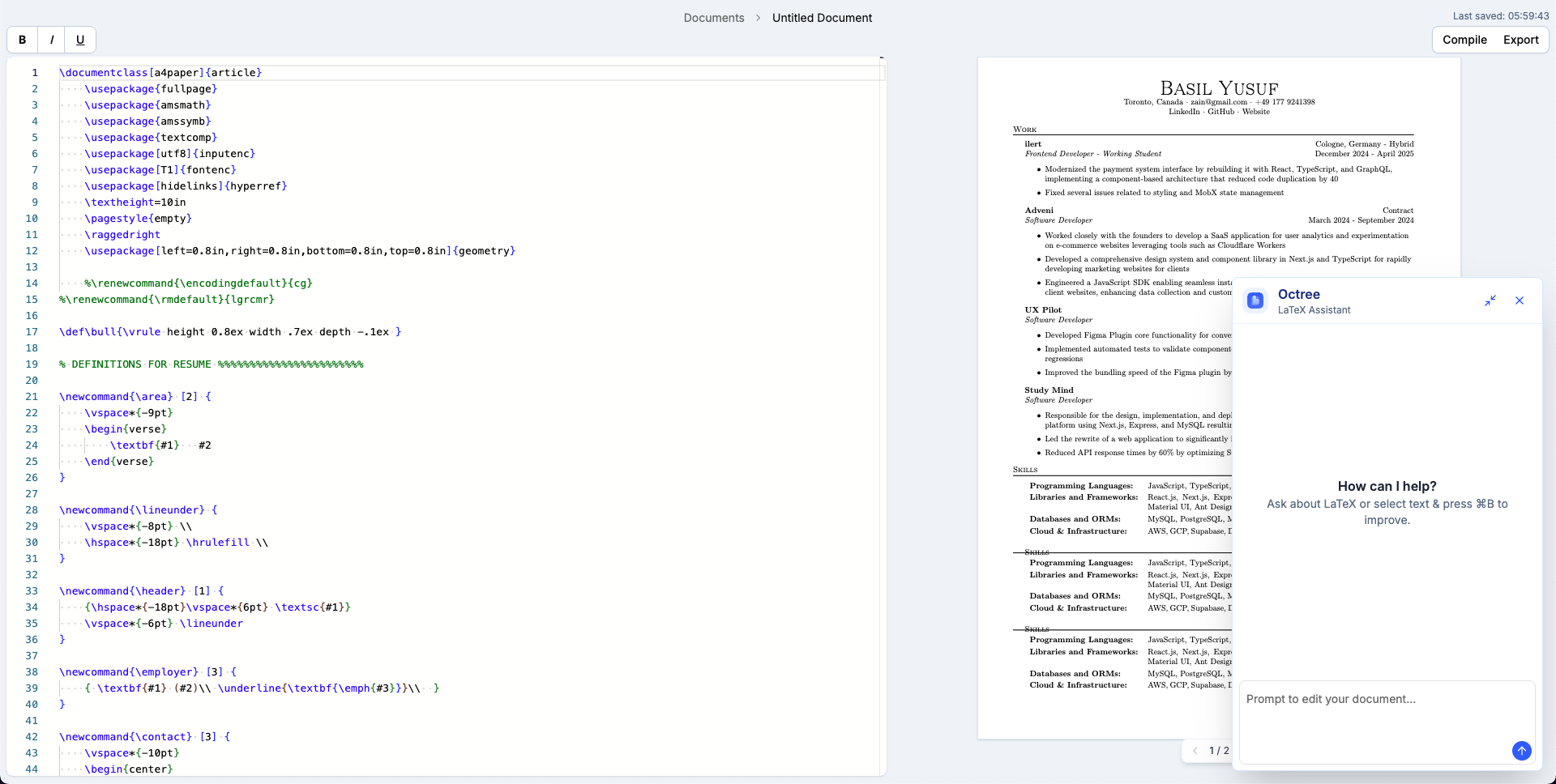
The idea behind the AI LaTeX Editor was born out of a clear gap in the academic tooling landscape — while LaTeX is a powerful typesetting system, it remains inaccessible to many due to its steep learning curve. We set out to change that by building an intelligent editor where users could create and edit LaTeX documents using prompt.
This was a unique opportunity to combine AI with modern UI design to simplify scholarly writing for students, researchers, and professionals.
Features 💡
- Generate LaTeX documents from plain-text prompts using AI.
- Edit existing documents using follow-up instructions (e.g., “add a table below this section”).
- Preview the compiled LaTeX output.
- Export documents to PDF
Stack ⚙️
We built the app using:
- Next.js (for a snappy and responsive UI)
- shadcn/ui (for reusable components and a clean look)
- Monaco Editor (for a powerful, VS Code–like editing experience)
- Supabase (as the backend for quick development)
- Stripe (for payments and subscriptions)
My Role 🎨
I was responsible for designing and implementing the entire UI/UX of the editor, ensuring it felt intuitive even for users unfamiliar with LaTeX
I designed a dual-pane layout — prompt input on the left, and live-rendered LaTeX on the right. This allowed users to iterate on documents in a conversational, visual way.
Other than I also worked on fixing and enchaning features on both the frontend and backend such as adding context for prompts and Stripe subscriptions
Results 📈
The editor was released in beta and quickly gained traction among students and academic writers. Users loved how it removed the friction of LaTeX syntax and made technical writing as simple as chatting with an assistant.
We are planning to implement requests from users and launch the product to general public soon!